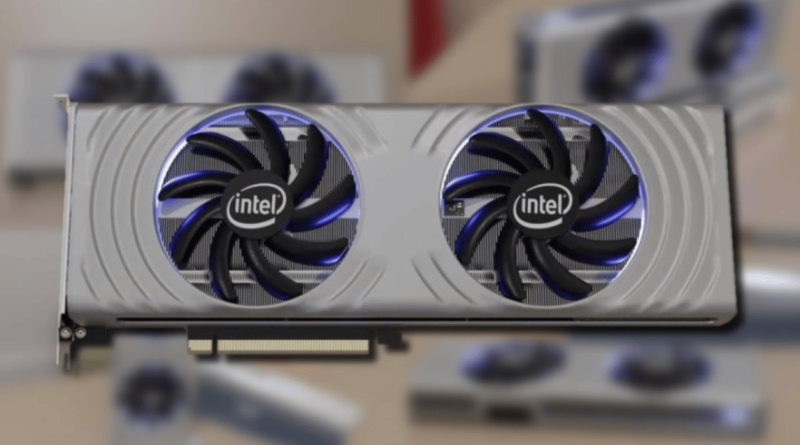Can Intel Arc’s GPU XeSS Supersample The Competition?
Intel’s Arc GPUs have made a noteworthy entry into the GPU market, heralding the arrival of a third major player in a domain long dominated by Nvidia and AMD. However, while the promise is evident, early adopters have grappled with teething issues, particularly in the realm of driver software.
Navigating The Intel Arc Experience
The potential of Intel Arc GPU, such as the A750 and A770, faces a roadblock in early software hiccups. Despite robust hardware, the driver side seems to be playing catch-up, raising questions about the practicality of using an Intel Arc A770 daily in 2023. The core concern remains: Can it overcome its buggy beginnings?
In an attempt to gauge the progress, let’s delve into the driver installation and overall user experience. We’ll explore basic driver functionalities and put the Arc A770 through its paces in popular games, aiming to assess its real-world performance.
Evolving Driver Stability
Initial reviews, including Brad Chacos’s analysis, highlighted driver and game issues with the Arc A750 and A770 upon release. Given Nvidia and AMD’s extensive driver development, Intel faces a considerable challenge in ensuring comparable software quality to vie for consumer confidence.
Intel claims to have addressed prior bugs with its latest Arc-series GPU drivers. The installation process is straightforward, offering stable releases or beta versions for those feeling adventurous. While beta drivers might cover newer game releases and bug fixes, the stable release is recommended for most users’ stability.
Improvements in Intel Arc Control have been noticeable, with smoother functionality reported. Additionally, third-party software like MSI Afterburner seemed compatible, reporting GPU data accurately.
Benefits:
-
Diverse Game Optimization:
Intel’s recent strides in optimizing DX9 and DX11 games showcase their commitment to enhancing performance across a spectrum of gaming titles. This extensive approach sets a strong foundation for compatibility, assuring gamers of improved experiences that are not limited to the latest releases.
-
Rapid Driver Updates:
Intel’s promptness in releasing drivers alongside new game launches, exemplified in the seamless integration with titles like Hogwarts Legacy, demonstrates agility in addressing compatibility issues. This proactive approach ensures users can delve into new games without waiting for prolonged driver updates.
-
Enhanced Ray Tracing and XeSS Support:
Intel’s XeSS upscaling technology, coupled with competent ray tracing performance, reflects the GPU’s versatility. The smooth gameplay in graphically demanding titles like Cyberpunk 2077 and Hogwarts Legacy, even at higher resolutions, signifies the potential for immersive gaming experiences.
-
Price competitiveness and ongoing improvement:
With recent price drops and ongoing driver improvements, Intel Arc GPUs have become an enticing option for budget-conscious gamers seeking commendable performance. The evolving nature of Intel Arc GPUs reflects Intel’s commitment to refining their product, promising a better
-
Broadening Ecosystem Compatibility:
Intel’s consistent strides in optimizing drivers for various gaming ecosystems, alongside third-party software like MSI Afterburner, reflect a commitment to enhancing user experiences across diverse setups. This broader compatibility extends Arc’s appeal beyond its hardware, ensuring smoother integration with different gaming environments.
-
Iterative Driver Improvements:
Intel’s focus on iterative driver updates to rectify initial bugs and enhance overall stability signals a commitment to ongoing improvement. This iterative approach instills confidence in users, assuring them of a maturing platform with each update and mitigating early hiccups encountered upon release.
-
Innovative Features and Scalability:
The integration of innovative features like Resizable BAR, despite initial hiccups, underscores Intel’s endeavor toward scalability and future-proofing its GPUs. While encountering minor issues, these forward-thinking features position Intel Arc as a platform ready to harness evolving gaming technologies.
-
Developer Collaboration and Fast-Track Adaptation:
Intel’s collaboration with game developers to optimize titles for its GPUs, as evidenced by the fast integration of XeSS technology into various games, exemplifies a concerted effort to stay relevant in the competitive gaming landscape. This adaptability showcases Intel’s proactive engagement to support developers and improve end-user experiences.
-
Optimized Power Efficiency:
Intel’s focus on optimizing power efficiency within its GPUs not only ensures better performance but also extends battery life on portable devices. This emphasis on power management caters to users seeking a balance between performance and energy consumption, particularly on laptops and mobile devices.
-
Accessibility to Advanced Features:
The continued enhancement and stabilization of advanced features like ray tracing and Intel’s XeSS technology reflect a commitment to democratizing cutting-edge gaming experiences. Intel Arc GPUs strive to make these high-end features accessible to a broader user base, not limited to flagship GPUs.
-
Streamlined Software Integration:
Intel Arc GPUs prioritize seamless integration with software, including content creation suites, offering refined driver support. This empowers creators to harness GPU-accelerated performance for diverse tasks beyond gaming. This versatility positions Intel Arc GPUs as capable companions for diverse creative workflows.
Intel Arc’s emphasis on compatibility, iterative improvement, innovation, and collaborative engagement within the gaming industry highlights its unique benefits. This solidifies its position as a strong contender in the GPU market.
Gaming Performance Insights
Testing the Arc A770 in several games reveals its prowess. Games like Hogwarts Legacy and Cyberpunk 2077 at 1440p and 4K demonstrate the GPU’s capabilities, maintaining playable frame rates with impressive smoothness.
However, titles like Dead Space presented inconsistent performance and odd screen behavior, suggesting game-specific issues. Nevertheless, improvements are evident, with fewer reported crashes and enhanced performance in older DX9 and DX11 games—a promising sign of ongoing driver optimizations.
The Verdict
Amidst ongoing optimizations and commendable progress, Intel’s Arc GPUs still grapple with minor issues. However, recent driver improvements and price reductions signal a maturing product. While not without caveats, the Arc series is inching closer to competing with established players, offering a viable alternative for consumers willing to navigate early software hiccups.
Recent GPU recommendations by Brad Chacos recognize Intel Arc as a noteworthy contender in the competitive GPU market.

